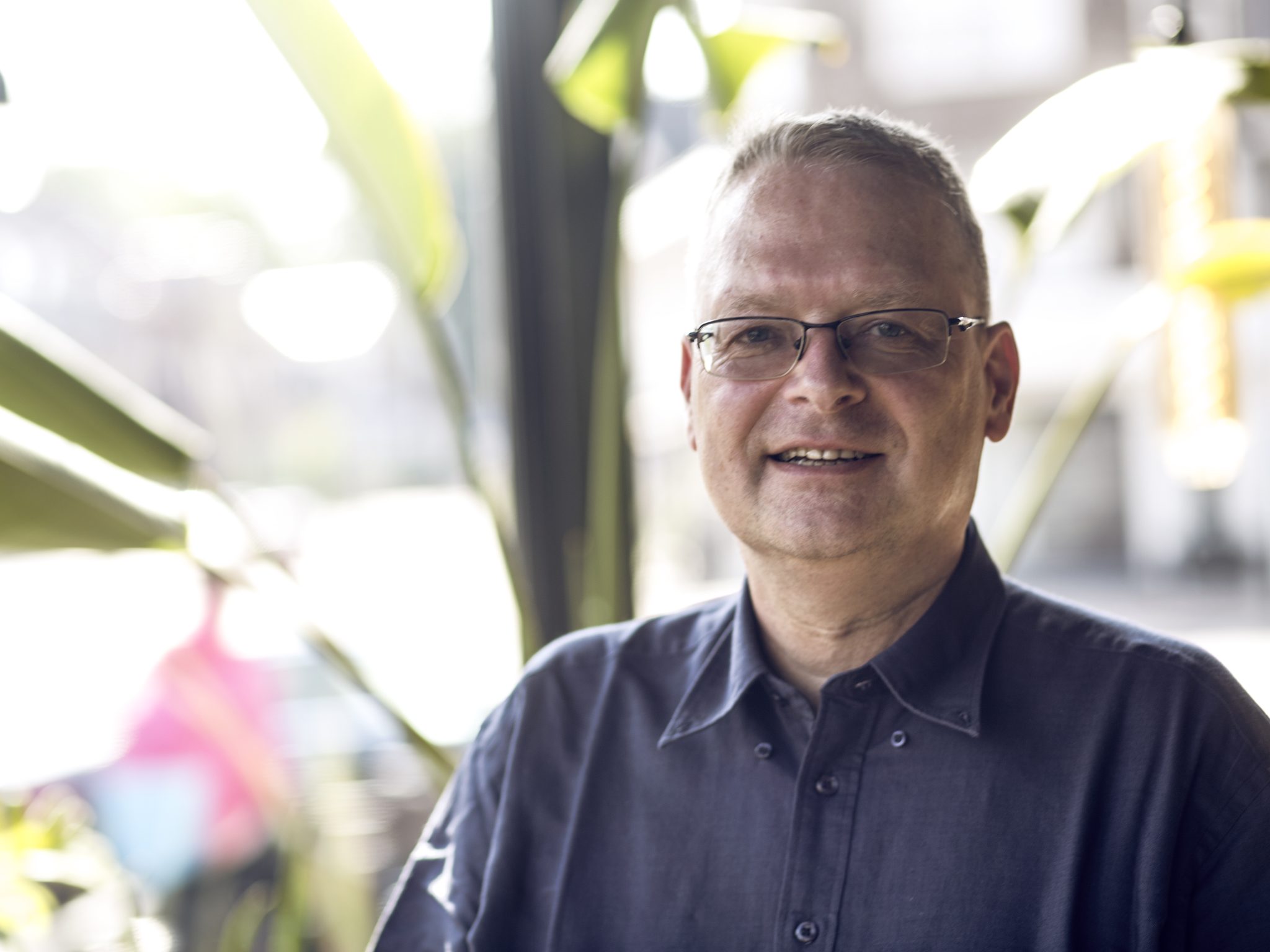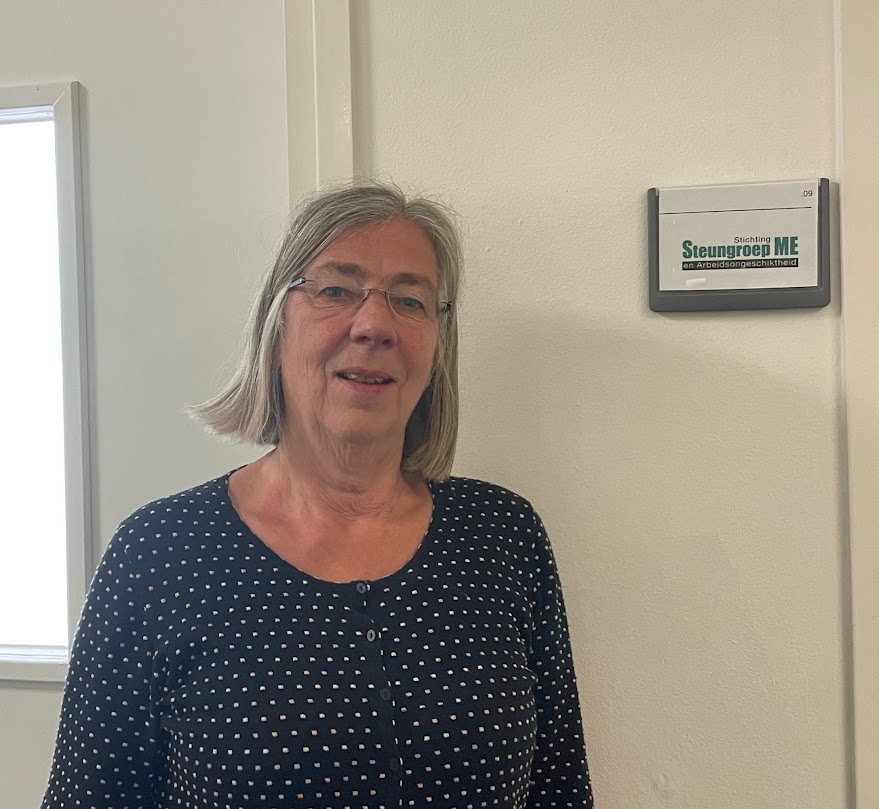


Representative MECVS Nederland



Representative Stichting Steungroep ME en Arbeidsongeschiktheid


Representative ME/cvs Vereniging
Theo Kuiphof has been the chairman of MECVS Nederland since 2016. During this period, numerous innovations took place within the organization, he was closely involved in the political lobby around the Health Council’s advice on ME/CFS, and MECVS Nederland won a prestigious award from the European Parliament for its youth project, as the first ME/CFS organization ever.
He was a member of the ZonMw steering committee, which developed the research agenda for ME/CFS in 2020. This served as the basis for the funding of the research program by the Minister of Health, Welfare and Sport. Theo has been involved with NMCB from the very beginning, when the consortium took its current form and the grant applications were prepared. As a member of the executive board of the NMCB, he organizes the contribution of MECVS Nederland within the consortium.
Theo studied econometrics at Vrije Universiteit and Dutch law at the Open University. In the past he has gained extensive experience in change processes within complex organizations. He has lived experience with ME/CFS.


Betsy van Oortmarssen has been involved with the Steungroep ME en Arbeidsongeschiktheid (ME and Disability Support Group) for years. In her work at the Hanze University of Applied Sciences and later at the FNV labor union, advocacy and attention to social security were central themes. In 2014, she obtained her PhD with a thesis titled ‘Reintegration after long-term sick leave. A longitudinal study of actions by and interactions among employees, managers and occupational physicians’. After her early retirement, Betsy became more involved with the Steungroep, serving as a board member and contributor to the helpline. Alongside two other volunteers, she assists over 200 ME/CFS patients annually with issues related to work, income, benefits, education, or school. Most inquiries concern disability assessments for WIA or Wajong benefits and appeal procedures. Regular discussions are held with the Employee Insurance Agency (UWV), the Ministry of Social Affairs and Employment, and members of parliament regarding the challenges faced by ME/CFS patients in their workplaces, schools, studies, and disability assessments.
Through her volunteer work with the Steungroep, Betsy – who is not an ME/CFS patient herself – has a clear understanding of the profound impact that ME/CFS has on the personal lives of patients and their loved ones. Confrontations with misunderstanding and injustice, along with being unheard by institutions such as the UWV, often exacerbate their suffering. ME/CFS patients are frequently told that their limitations are ‘not medically objective’, attributed to ‘deconditioning’, incorrect behavior, or erroneous thoughts.
This motivates Betsy to advocate for the NMCB alongside representatives of other patient organizations. Her hope is that the researchers associated with the NMCB will achieve scientific breakthroughs soon, bringing about the long-awaited change that ME/CFS patients and their families have been waiting for.


Markus is father of three daughters, two of whom have severe ME/CFS and are house/bed-bound. His wife also has ME/CFS, a diagnosis she had to wait for about 31 years to receive. She has been ill for over 36 years, now in a very severe condition. She has been staying in a dark room for almost four years now.
In addition to his full-time job as an LSH innovation advisor and caregiver for his two family members, Markus has been involved as a patient representative on behalf of the ME/cvs Vereniging with the NMCB (in formation) since January 2022.
The profoundly disabling and life-destroying nature of ME/CFS – for his family members and fellow patients – and the fact that this complex multisystem disease has been ignored, minimized, and psychologized for decades – are the main drivers for him to want to contribute.
The lack of care, societal recognition & support, and the enormous knowledge gap among, for example, doctors – with all its consequences – also contribute to this. Fortunately, the tide is slowly turning, partly due to all the attention on Long Covid.
As of October 2023, Markus is an NMCB board member, contributing in various areas (such as technical content, recruitment, strategy, communication, setting up patient-led drug research, etc.). He collaborates with the two other patient organization NMCB board members, other patient representatives, and the NMCB management team.




Representative MECVS Nederland
Theo Kuiphof has been the chairman of MECVS Nederland since 2016. During this period, numerous innovations took place within the organization, he was closely involved in the political lobby around the Health Council’s advice on ME/CFS, and MECVS Nederland won a prestigious award from the European Parliament for its youth project, as the first ME/CFS organization ever.
He was a member of the ZonMw steering committee, which developed the research agenda for ME/CFS in 2020. This served as the basis for the funding of the research program by the Minister of Health, Welfare and Sport. Theo has been involved with NMCB from the very beginning, when the consortium took its current form and the grant applications were prepared. As a member of the executive board of the NMCB, he organizes the contribution of MECVS Nederland within the consortium.
Theo studied econometrics at Vrije Universiteit and Dutch law at the Open University. In the past he has gained extensive experience in change processes within complex organizations. He has lived experience with ME/CFS.





Representative Stichting Steungroep ME en Arbeidsongeschiktheid
Betsy van Oortmarssen has been involved with the Steungroep ME en Arbeidsongeschiktheid (ME and Disability Support Group) for years. In her work at the Hanze University of Applied Sciences and later at the FNV labor union, advocacy and attention to social security were central themes. In 2014, she obtained her PhD with a thesis titled ‘Reintegration after long-term sick leave. A longitudinal study of actions by and interactions among employees, managers and occupational physicians’. After her early retirement, Betsy became more involved with the Steungroep, serving as a board member and contributor to the helpline. Alongside two other volunteers, she assists over 200 ME/CFS patients annually with issues related to work, income, benefits, education, or school. Most inquiries concern disability assessments for WIA or Wajong benefits and appeal procedures. Regular discussions are held with the Employee Insurance Agency (UWV), the Ministry of Social Affairs and Employment, and members of parliament regarding the challenges faced by ME/CFS patients in their workplaces, schools, studies, and disability assessments.
Through her volunteer work with the Steungroep, Betsy – who is not an ME/CFS patient herself – has a clear understanding of the profound impact that ME/CFS has on the personal lives of patients and their loved ones. Confrontations with misunderstanding and injustice, along with being unheard by institutions such as the UWV, often exacerbate their suffering. ME/CFS patients are frequently told that their limitations are ‘not medically objective’, attributed to ‘deconditioning’, incorrect behavior, or erroneous thoughts.
This motivates Betsy to advocate for the NMCB alongside representatives of other patient organizations. Her hope is that the researchers associated with the NMCB will achieve scientific breakthroughs soon, bringing about the long-awaited change that ME/CFS patients and their families have been waiting for.




Representative ME/cvs Vereniging
Markus is father of three daughters, two of whom have severe ME/CFS and are house/bed-bound. His wife also has ME/CFS, a diagnosis she had to wait for about 31 years to receive. She has been ill for over 36 years, now in a very severe condition. She has been staying in a dark room for almost four years now.
In addition to his full-time job as an LSH innovation advisor and caregiver for his two family members, Markus has been involved as a patient representative on behalf of the ME/cvs Vereniging with the NMCB (in formation) since January 2022.
The profoundly disabling and life-destroying nature of ME/CFS – for his family members and fellow patients – and the fact that this complex multisystem disease has been ignored, minimized, and psychologized for decades – are the main drivers for him to want to contribute.
The lack of care, societal recognition & support, and the enormous knowledge gap among, for example, doctors – with all its consequences – also contribute to this. Fortunately, the tide is slowly turning, partly due to all the attention on Long Covid.
As of October 2023, Markus is an NMCB board member, contributing in various areas (such as technical content, recruitment, strategy, communication, setting up patient-led drug research, etc.). He collaborates with the two other patient organization NMCB board members, other patient representatives, and the NMCB management team.

NMCB
We firmly believe that the internet should be available and accessible to anyone, and are committed to providing a website that is accessible to the widest possible audience, regardless of circumstance and ability.
To fulfill this, we aim to adhere as strictly as possible to the World Wide Web Consortium’s (W3C) Web Content Accessibility Guidelines 2.1 (WCAG 2.1) at the AA level. These guidelines explain how to make web content accessible to people with a wide array of disabilities. Complying with those guidelines helps us ensure that the website is accessible to all people: blind people, people with motor impairments, visual impairment, cognitive disabilities, and more.
This website utilizes various technologies that are meant to make it as accessible as possible at all times. We utilize an accessibility interface that allows persons with specific disabilities to adjust the website’s UI (user interface) and design it to their personal needs.
Additionally, the website utilizes an AI-based application that runs in the background and optimizes its accessibility level constantly. This application remediates the website’s HTML, adapts Its functionality and behavior for screen-readers used by the blind users, and for keyboard functions used by individuals with motor impairments.
If you’ve found a malfunction or have ideas for improvement, we’ll be happy to hear from you. You can reach out to the website’s operators by using the following email
Our website implements the ARIA attributes (Accessible Rich Internet Applications) technique, alongside various different behavioral changes, to ensure blind users visiting with screen-readers are able to read, comprehend, and enjoy the website’s functions. As soon as a user with a screen-reader enters your site, they immediately receive a prompt to enter the Screen-Reader Profile so they can browse and operate your site effectively. Here’s how our website covers some of the most important screen-reader requirements, alongside console screenshots of code examples:
Screen-reader optimization: we run a background process that learns the website’s components from top to bottom, to ensure ongoing compliance even when updating the website. In this process, we provide screen-readers with meaningful data using the ARIA set of attributes. For example, we provide accurate form labels; descriptions for actionable icons (social media icons, search icons, cart icons, etc.); validation guidance for form inputs; element roles such as buttons, menus, modal dialogues (popups), and others. Additionally, the background process scans all the website’s images and provides an accurate and meaningful image-object-recognition-based description as an ALT (alternate text) tag for images that are not described. It will also extract texts that are embedded within the image, using an OCR (optical character recognition) technology. To turn on screen-reader adjustments at any time, users need only to press the Alt+1 keyboard combination. Screen-reader users also get automatic announcements to turn the Screen-reader mode on as soon as they enter the website.
These adjustments are compatible with all popular screen readers, including JAWS and NVDA.
Keyboard navigation optimization: The background process also adjusts the website’s HTML, and adds various behaviors using JavaScript code to make the website operable by the keyboard. This includes the ability to navigate the website using the Tab and Shift+Tab keys, operate dropdowns with the arrow keys, close them with Esc, trigger buttons and links using the Enter key, navigate between radio and checkbox elements using the arrow keys, and fill them in with the Spacebar or Enter key.Additionally, keyboard users will find quick-navigation and content-skip menus, available at any time by clicking Alt+1, or as the first elements of the site while navigating with the keyboard. The background process also handles triggered popups by moving the keyboard focus towards them as soon as they appear, and not allow the focus drift outside it.
Users can also use shortcuts such as “M” (menus), “H” (headings), “F” (forms), “B” (buttons), and “G” (graphics) to jump to specific elements.
We aim to support the widest array of browsers and assistive technologies as possible, so our users can choose the best fitting tools for them, with as few limitations as possible. Therefore, we have worked very hard to be able to support all major systems that comprise over 95% of the user market share including Google Chrome, Mozilla Firefox, Apple Safari, Opera and Microsoft Edge, JAWS and NVDA (screen readers).
Despite our very best efforts to allow anybody to adjust the website to their needs. There may still be pages or sections that are not fully accessible, are in the process of becoming accessible, or are lacking an adequate technological solution to make them accessible. Still, we are continually improving our accessibility, adding, updating and improving its options and features, and developing and adopting new technologies. All this is meant to reach the optimal level of accessibility, following technological advancements. For any assistance, please reach out to